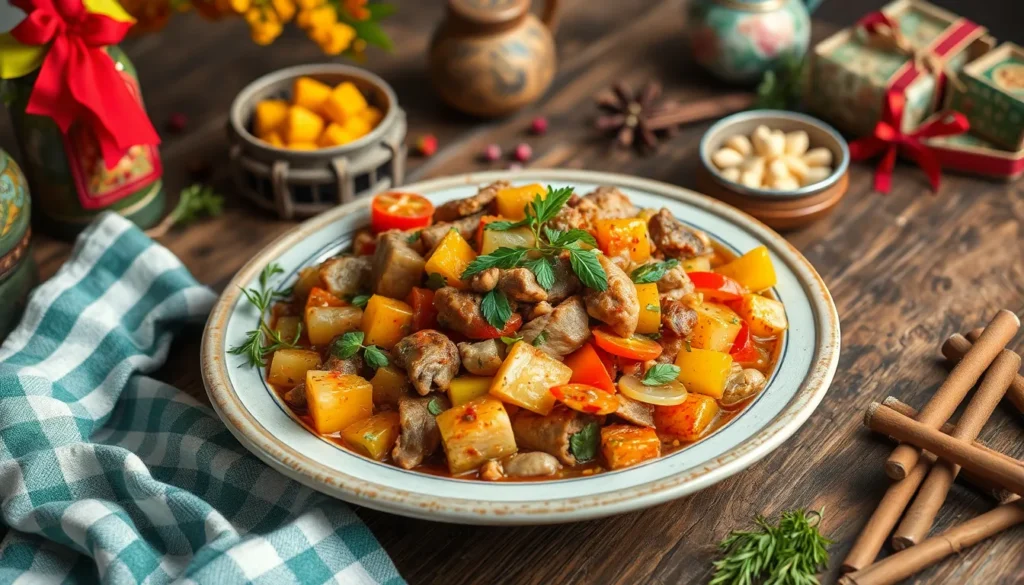In a world brimming with culinary delights, arikitsya stands out like a diamond in a sea of pebbles. This unique dish isn’t just a meal; it’s an experience that tickles the taste buds and leaves diners craving more. Imagine a fusion of flavors that dances on the palate, making every bite a celebration.
Table of Contents
ToggleOverview of Arikitsya
Arikitsya embodies a unique culinary tradition that combines diverse flavors. It stands out as a dish that celebrates cultural heritage while offering a rich taste experience.
Definition and Origin
Arikitsya refers to a traditional dish characterized by its flavorful ingredients and cooking methods. Originating from specific regions known for their culinary arts, it showcases a blend of local spices, vegetables, and proteins. Various recipes exist, with each region adding its twist to the dish. Historical accounts suggest that arikitsya evolved from ancient cooking practices, allowing generations to adapt and refine its flavors over time.
Cultural Significance
Arikitsya plays a vital role in social gatherings and celebrations. It often appears at festivals and community events, symbolizing hospitality and sharing. Families frequently prepare arikitsya during important occasions, reinforcing traditions and strengthening communal bonds. Its significance extends beyond food, embodying the story and identity of the culture it represents. With each bite, diners experience a connection to their heritage, making arikitsya more than just a meal; it’s a celebration of life and togetherness.
Features of Arikitsya

Arikitsya showcases a blend of traditional cooking techniques and flavorful ingredients, creating a memorable culinary experience. This dish embodies a rich heritage, capturing the essence of diverse regions.
Key Characteristics
Distinctive flavors define arikitsya, often infused with local spices that enhance its taste. Ingredients frequently include fresh vegetables, meats, and aromatic herbs, contributing to its vibrant profile. Cooking methods vary, with some preparations focusing on slow cooking to deepen flavors. Texture also plays a vital role, as the dish aims for a balance between tender and crisp elements. Preparation often involves communal effort, reinforcing tradition and togetherness among families.
Popular Varieties
Regional adaptations of arikitsya offer a variety in taste and presentation. In coastal areas, seafood variations prevail, featuring fresh fish and shellfish, while inland regions might emphasize hearty meats. Vegetarian options are common, highlighting seasonal vegetables and legumes. Unique spice blends further differentiate each variety, showcasing local influences. Festivals and gatherings often highlight these popular variations, celebrating community and heritage.
Benefits of Arikitsya
Arikitsya offers a variety of benefits that enhance its appeal beyond its rich flavors.
Health Benefits
Health advantages stem from its use of fresh ingredients. Many recipes incorporate vegetables, which provide essential vitamins and minerals. Each ingredient contributes to a well-rounded meal. Lean proteins included in the dish support muscle health, while traditional spices may offer anti-inflammatory properties. A high fiber content from legumes and whole grains aids digestion, promoting overall wellness. Each family-recipe variation incorporates specific ingredients tailored to nutritional needs, emphasizing a balance between indulgence and health.
Environmental Impact
Environmental benefits arise from localized sourcing of ingredients. Many cultures prioritize seasonal produce, reducing carbon footprints associated with transportation. Families often grow some of their vegetables, fostering sustainable practices. Traditional cooking methods often require less energy than modern techniques, further minimizing environmental impact. Community gatherings around arikitsya promote awareness of supporting local farmers. This approach encourages a deeper connection between consumers and their environment, fostering sustainability in culinary practices.
How to Incorporate Arikitsya
Incorporating arikitsya into culinary practices enriches dishes and cultural experiences. This dish serves versatile uses across various meals and occasions.
Culinary Uses
Arikitsya complements an array of dishes, fitting seamlessly into appetizers, main courses, or even festive spreads. Chefs often integrate it into family feasts, celebrating togetherness and cultural heritage. Seasonal variations of arikitsya highlight local ingredients, ensuring freshness and flavor. It pairs well with grains, enhancing the nutritional profile of each meal. For a unique twist, some adapt it into fusion recipes, combining elements from different cuisines. Whether served at home or in social gatherings, arikitsya consistently impresses diners with its distinct flavors and textures.
Traditional Practices
Traditional preparation of arikitsya emphasizes family collaboration and community engagement. Techniques passed down through generations involve time-honored cooking methods that boost flavor. Families often gather to prepare the dish, reinforcing bonds and shared memories. Cooking methods vary, with some focusing on slow roasting or steaming to enrich taste. Festivals prominently feature arikitsya, showcasing its significance in communal celebrations. Each region may introduce its variations, reflecting local customs and ingredients. These practices celebrate cultural identity, ensuring that arikitsya remains a cherished part of culinary tradition.
Arikitsya stands as a testament to the beauty of culinary traditions that unite communities through shared flavors and experiences. Its rich history and diverse regional variations reflect the cultural heritage and creativity of those who prepare it. This dish not only nourishes the body but also strengthens bonds among families and friends during gatherings and celebrations.
By embracing local ingredients and sustainable practices, arikitsya encourages a deeper connection with food and the environment. As it continues to evolve, this remarkable dish remains a cherished part of culinary culture, inviting everyone to partake in its delicious journey.




